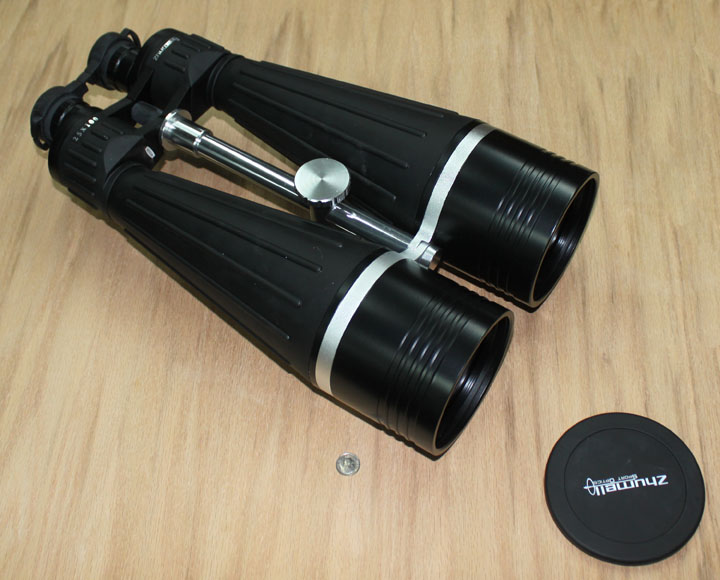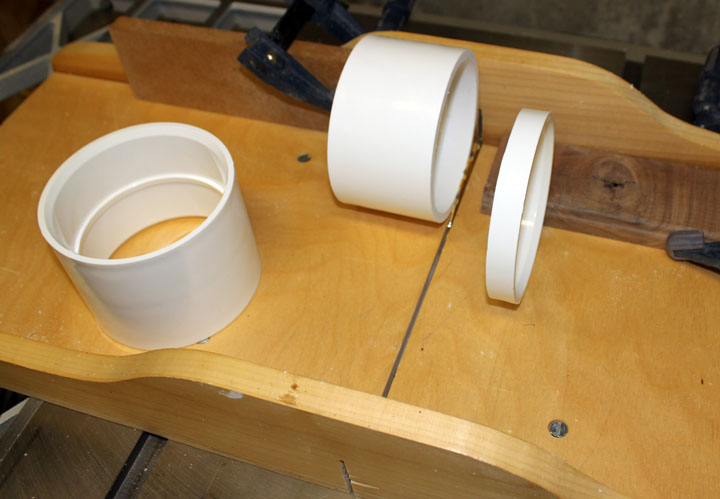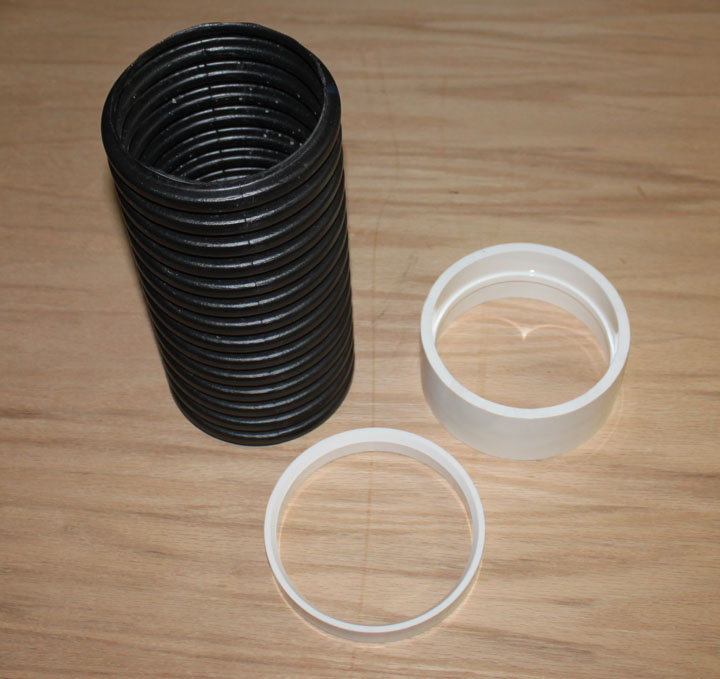
Fig. 1
The 25x100 Zhumell Tachyon binoculars I have are fairly large - the dime in the photo above gives you a sense of scale. However, the lenses tend to get covered with dew during the night, just like any telescope. There are two traditional solutions for this - build a dew heater by making resistive strips that go around the lens housing to keep the temperature of the lenses higher than the dew point, or place a shield that extends well beyond the lens opening to keep the dew off the lenses. The latter method has one big advantage: a dew shield doesn't require a power supply (batteries).
Also, dew shields help to keep dust and other airborne thingies off your lenses, as well as misplaced fingers. They also block stray light coming from the sides, like streetlights, which will reduce the contrast of the eyepiece image.
Dew shields can be as simple as taping a piece of black poster paper around the lens opening, but I was looking for something a bit more rugged. However, if this involved something commercial that has been machined to fit these particular binoculars, or some exotic material then they would probably be expensive. Popular commercial ones are Astrozap shields, or similar, but these are $30-100 for one, and we need two of them. This page describes the two shields I made for my four inch binoculars for $15.

Fig. 2
I took the lens cap shown in the bottom of Figure 1 with me to a big box hardware store, and discovered that the right sized PVC pipe coupling, shown on the left in the photo above, fit perfectly.
This is very lucky, given that the outside diameter of the lens housing on the binos is 114mm (4.488 inches) and the opening of the PVC coupling tapers a bit and fits it perfectly. (The coupler is for a 4 inch inside diameter pipe, and the pipe's walls are just under 1/4 inch thick.) Also, the price was right at about $4. This also means this dewsheild design will work for any scope or bino with a 114mm OD objective.
However, the PVC coupler weighs just over 3/4 of a pound - or 348 grams to be exact. The binos are heavy enough as they are, so I decided to cut them down a bit although you don't have to if you don't mind the weight.
In the photo above I've cut about 3/4 inch off one side of a coupler on my table saw using a sled and allowing the coupler to rotate over the saw blade between two clamped blocks. You could also do this with a bandsaw with a fence. One of the rings will be used for a collar for the open end of the tube.
After cutting down both sides of each ring, the adapter is down to 200 grams, or 0.4 pounds.
.

Above shows the parts for one of the dewshields. On the left is some plastic non-perforated corrugated 4 inch drain pipe. This material comes in straight 10 foot lengths or a 50 foot coil. Pieces cut from the coil will have a slight curve to them that might be hard to get rid of, so I got a 10 foot straight length. I bought it at Lowe's, a big box hardware store in the US for $5.41. The only problem with the drain pipe it is what to do with the other 8 feet of it when I'm done.
A rule of thumb for the length of dewsheilds is that they should be at least 2 1/2 times the diameter of the lens opening., so I cut two 10 inch lengths.
Next, we just glue them together and spray them with flat black paint.
Fig. 4
Here they are after some epoxy set-up time has passed.
Here are the dew shields painted flat black and ready for action. The camera flash makes them shine, but the paint is much flatter than that. If needed I can line the tubes with something flatter, like flocking.
The Bino Chair
|